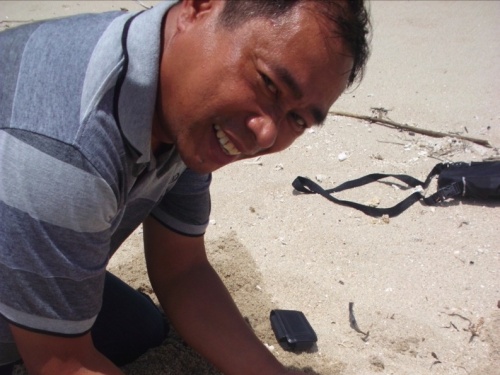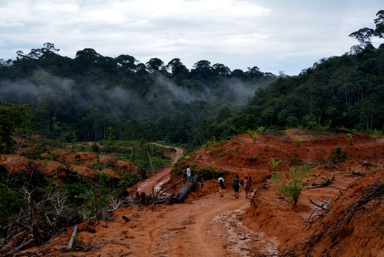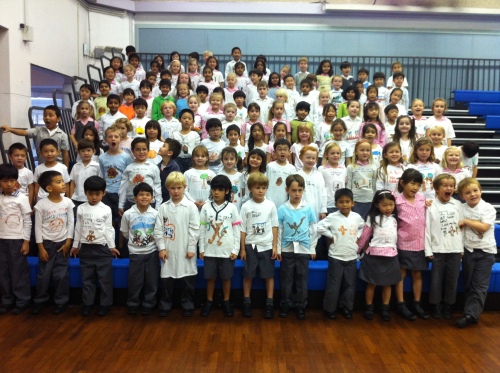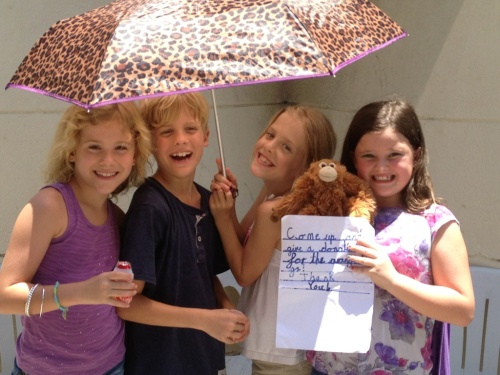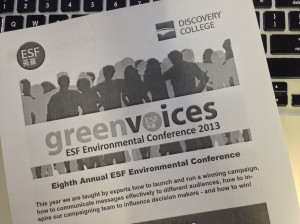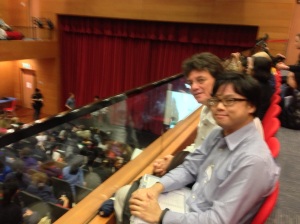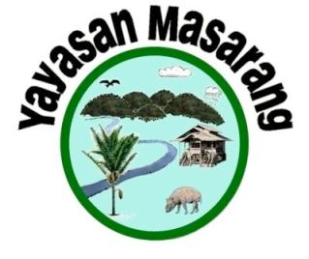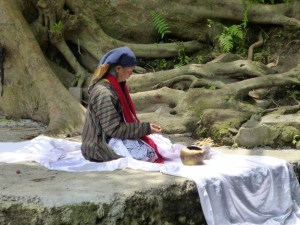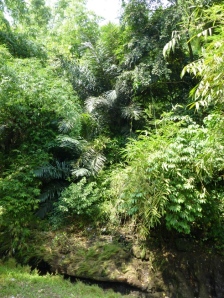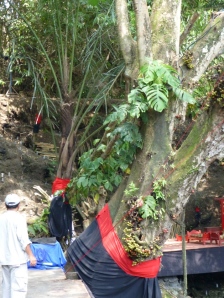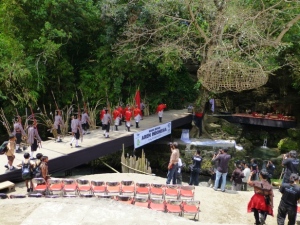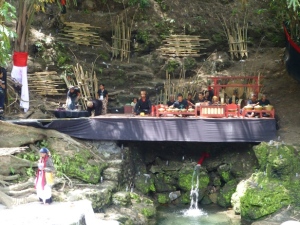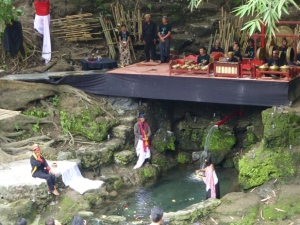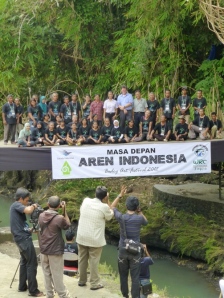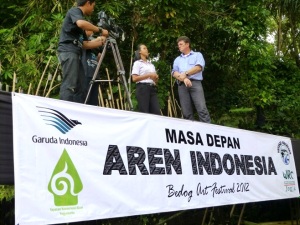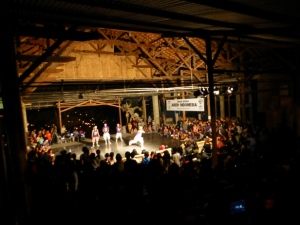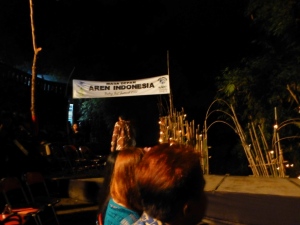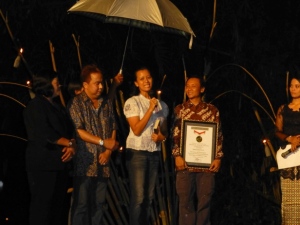Raindrops splatter on the roof and sometimes a car passes by through the night here at the Kobus Foundation house in the heart of Borneo. Too many thoughts occupy my mind and I cannot sleep so why not write a bit for my friends. I have done much less of writing than I could have, and wanted recently, since there are still some people around that will use anything and
everything in a negative way. But it is good to write things down to recall the beautiful and inspiring moments here in the interior of Borneo in a couple of years, when I may not be able to stroll around these forests and so many interesting things may already have changed in the tide of time. And it is also good to look at my own thoughts while writing. It often brings new ideas and insights on how to move forward and almost feels as if I am having a good discussion with trusted friends.
The travel here this time is not really worth mentioning. Low hanging rain clouds obscured the patched and scarred surface of Borneo beneath us while flying in the little airplane. Father Jacques, who had sold his trusted car his family had sponsored, had come to the airport on the back of a motor bike and was soaking wet and cold but with warm words of welcome. We rented his old car from the new owner and soon were back at the beautiful terrace of the Kobus Foundation house overlooking the carefully designed and maintained tropical garden of Father Jacques that seamlessly flows over into the tropical swamp forest behind the house filled with Dayak ornamentals. Father
Jacques likes to tell new guests about his “stolen” panorama as a former official called his spectacular view of the forest behind the garden. Of course he felt happy to explain this again for the new guests I brought with me that came to look at how their sponsorship of our foundation had helped things here. Here is a picture of Father Jacques with one of his many rewards for 45 years of dedicating his life to the well‐being and culture of the Dayaks.
The new orangutans, Beno and Joy, a beautiful thickly haired male orangutan with mile‐deep eyes and a skinny sun‐burned, much to small for her age, little female were exited to meet me. Of course Jamilah, the one‐eyed female and grateful Mamat were calling me from afar already. And so were all the others. The three tiny babies, Terra, Iga and Ribang, now already expertly moving through the trees, moved a bit closer to Jessie the new babysitter who dearly loves them. And clearly they love her! Dr Viktor, a local young veterinarian from Sintang who joined Dr Sri in the medical team was scrubbing the floors of the cages and giving directions to the new staff in training. Lovely to see how he gave the personal example of working hard together with the technicians!
The trees in and around the area where the orangutans practice climbing in the trees clearly let through more light thanks to the first attempts at nest building and leaf testing by the baby group. The new clinic, painted in, for me, a bit strange light green color, stood massively at the other side of the rescue center’s compound and a series of new additional quarantine cages sponsored by a new supporter from The Netherlands, stood freshly painted nearby the clinic. The new paths completed the feeling that I had been away too long! Actually it was not that long at all but so many things happening do create that feeling. The office with a new administrative female staff looked well organized and the ornamental entrance gate to the office had been beautifully
painted in the traditional Dayak colors. In the seemingly abstract forms of the Dayak ornaments are still hidden the hornbills, tree of life and dragons of the past they were supposed to forget.
From the Kobus longhouse, some hundred meters away from the office, we could hear the latest school group busy with the environmental educational activities that sounded like lots of fun. While picking up garbage along the road I cut two fingers on some rusty metal. More antibiotics were needed to deal with the infection unfortunately. Together with my trigger thumb, for which I have to wear a brace for a while, I felt very clumsy and typing is not that easy. But it helps to spend the last dark hours of the night writing until the first roosters announce the new day.
Then the usual many groups of visitors arrived as arranged by Father Jacques who always tries to squeeze out every minute to make optimal use of my time here in Sintang. Credit Union people, a huge organization supported by more than a hundred thousand Dayaks, came to discuss how they could help the local people get more good quality sugar palms that have become in great demand after Nico, our master tapper, and others from the Masarang Foundation visited some 120 villages over the last year. There were also other groups of villagers representing communities that wanted me to come to their locations.
One of them was from the Ketunggau people from the reforestation area of DeforestAction that the Bupati of Sintang offered us to work. However, we then had to learn about an overlap of part of the area with a huge and mighty timber
company that somehow got it through the Ministry of Forestry. That conflict is still ongoing. So it was especially good to hear from the local people themselves that they did not want the company to cut the area that still had some good forest and they also did not want those oil palm companies that were already trying to get in as well. They wanted a mini hydro from that good forest and sugar palms! One of the representatives named
Adrianus was a nephew of my friend pak Sembai, the leader of the longhouse in Ensaid Panjang. Not just his face, even his voice sounded similar! And he had seen the nursery there near the longhouse with the 30.000 specially grown sugar palms from North Sulawesi and heard about the training that our Masarang staff had given there and all the uses the sugar palm had for the people.
I told the group who had traveled so far to see me that I wanted first more data on their existing sugar palms, the area, the number of families involved, the illipe nut trees they said were still growing there in large numbers and the wildlife in their forests. In just over two weeks I will be back here for a large tribal meeting in Tembak where the traditional leaders will discuss the strategy to stop the ruthless oil palm companies that bribed themselves into some of their communities and threaten the future of all of them. Then the information will be waiting here in Sintang for me with Father Jacques.
Their timing is actually quite good. Thanks to a donation from a foundation from The Netherlands we just built the training unit to produce ethanol from sugar palm juice as well as other feed stocks on which the local people can run their motor bikes and small generators and that they can also use for their kerosene lamps and for cooking. Brother Piet, besides Father Jacques the only other formerly Dutch, now Indonesian missionary that still lives here, and former head
of the technical school in Sintang, just built the example installation at his multi facetted compound. It also includes a simple biogas installation and wood drying units. We hope to build two more of these mini village hubs in Tertung and Benua Martinus, two locations that already have enough sugar palms to demonstrate the practical application of these practical and environmentally friendly technologies.
However, to their surprise, I explained to the Ketungau group that they were not going to get everything for free… Pak Ajai, the leader of the group, clearly all of a
sudden looked extremely worried. Yes, I said, you have to pay by protecting the remaining orangutans in your forest. And also you shall have to stop the outside hunters that come to poach birds and other animals! Big smiles of relief! Deal!!
Then pak Antonius Lambung, the fearless and active leader of the Seberuang Dayaks arrived. He brought along Dr. Piet Hermans, a local Dayak with a PhD and a name that could not possibly sound more Dutch than it did! He also brought Agung, son of Apui, the keeper of traditions of the Tembak village and Maria, the lawyer of the special team of the bishop of Sintang. She already
has had some successes with the special team of the Bishop of Sintang in stopping oil palm companies in other places and has now taken on our case to stop the DSN group from destroying their future. The group is a member of the RSPO and responded to the official complaint filed by pak Lambung.
The team came to show me the various documents they had unearthed and showed me the interviews with the various people whose land was taken illegally and the documents that showed how the village head of Sungai Bulu had done his shady dealings with the oil palm company and betrayed his people. Also the interview with the Temunggung, the traditional leader of the Dayak tribes and responsible for statements by the tribe, was extremely impressive! This not so traditional head of the Sungai Bulu village may have signed some papers giving away thousands of hectares of virgin forest, in itself a crime, but as long as the adat, the traditions, are practiced he cannot give away and change past agreements with the Temunggung! The Sungai Bulu case is going to be a fantastic proof of the typical ways these ruthless oil palm companies are working. I very much look forward to the progress of the legal process this team is pursuing!
Then we left for the Tempunak region, three hours south of Sintang, where the conflicts are taking place. Unfortunately, I lost my wallet with lots of important cards during one of the stops to take pictures on the way to Tembak. Once in the village there was first a warm welcome by all friends there but within minutes we were on our way to the conflict area of Sungai Bulu, since I wanted to see the sharp contrast between the palm oil clear‐cut
area and the virgin forest soon to go if we do nothing. There had just been heavy rain and despite having the best four‐wheel drive vehicle in the region and an expert driver we had to give up. Several stranded vehicles that got stuck in the mud blocked the road and it was not possible to get up the extremely slippery roads. We promised that if it would not rain that night we would be back at 6 am.
Back in the Tembak village I inspected the new longhouse, completely built by the Dayaks themselves and with financial support from Mrs. Tirto Utomo of the Indonesian Aqua company. The solar panels and energy efficient LED lights were not very traditional, but extremely useful. Then we drove off to look at the location for the new Illipe nut processing factory we want to built in Tembak. Illipe nuts are seeds from the majestic tropical hardwoods known as Meranti, Lauan, etc. Once 25% of all tropical hardwood timber came from these trees, now it is virtually gone. But the Tengkawang trees (Shorea stenoptera) that produce the Illipe nuts are still present in the remote areas. The seeds produce a very healthy fat that in the past was used for make up and chocolate and formerly known as Borneo tallow. But… as always, money rules this world. Now people put their trust in numbers on pieces of paper or a screen not at the other issues! So the oil palms win and companies switch to the cheapest goods that provide the most profit for the companies. But what about the real costs?! Biodiversity loss, soil water and river pollution, loss of materials, medicines, meat and fish, more diseases for the local people, mud reaching the sea killing off coral reefs that are the breeding grounds of fish for coastal communities, the conflicts between villages, tribes… Only the local people pay those costs!
The Masarang and Kobus Foundations want to preserve the Illipe nut trees, their jungle and the benefits they bring. But this is only possible if we can assign value to the trees that can be felt directly by the local people. This is why we are going to build a small village processing unit for the Illipe nuts. Now the seeds are only dried by the local people and sold cheap to traders that take them all the way to Pontianak to be processed there. We want the seeds to be processed into high quality fat in the villages themselves to create the added value there and to transport it cheaply to buyers abroad that value real sustainability, for there is no such thing as “sustainable palm oil”! It infuriates me that there are people trying to sell the false message of sustainable palm oil. How can any system that only works when fossil fuel based inputs in the form of fertilizer and various kinds of pesticides/herbicides/rodenticides/etc. are applied to achieve a commercial production ever be called sustainable??
But I am letting myself go again. Let’s focus on solutions rather than just venting anger for that will not change this world. And there are solutions! And the Dayak people know many of them! With some additional support and techniques we can make those solutions sustainable and truly triple P.
The land that was donated by pak Joanis of the Tembak village to build the Illipe nut processing plant turned out to be perfect. Sufficiently flat, free of flooding, directly along the main road from Tembak to the Sungai Buaya village, large enough to process all the local Illipe nuts, and away from any houses. In it stood a mighty honey tree (Koompassia excelsis) and rubber trees that were past
their productive years. I immediately worked out the design and the next morning we had a meeting with the elders of the Tembak village on how they would manage their new factory. The design is quite special as it uses waste material as the energy source and basis for the biochar that is to permanently enhance the poor soils of the farmers. The factory will also be useful to dry other agricultural products and provide electricity for many families. When the thousands of newly planted sugar palms nearby start producing it can also process the large quantities of palm juice while all nutrients are returned to the land. True sustainability!
The funds for this project came from a family foundation in The Netherlands who had heard about our work from members of another foundation that are helping us to provide the Dayaks with all those sugar palm seedlings. I am particularly proud that we as local foundations are able to do so much with so little funding by doing things with local people. But none of this would be possible without the trust of the local people and that trust they have in Father Jacques who has dedicated 45 years of his life to helping them. And then there is the trust of those foundations and well‐meaning people, mostly from The Netherlands, that trust us to help the orangutans and the Dayaks by preserving nature. And then there is the trust of the lovely orangutan, Mamat, and his other red‐haired friends that know we are helping them . I will write about Mamat very soon…
Back in the Tembak village, I had a meeting with the elders on various other issues and, after some food, it was time to go to the Arai village. The village head had asked for me to come and speak to the whole village since the oil palm groups had also been pressuring him to give up their land to them. And this village is directly bordering the forest where Mamat and his friends are to live protected by the Seberuang tribe all around the 30.000‐hectare large virgin jungle of the Saran Mountain. With a 4 WD pick up loaded to the maximum with people we drove through the rainy night until the road got too bad to pass and we had to leave the car to walk the last few kilometers to the Arai village.
Soon we saw the water powered lights from the village and not long after the big meeting room of the village was filling up with over a hundred farmers and a few women. The village head introduced me. After my simple lecture, which received intense attention, many questions were asked. Then Antonius Lambung and
Nayau, two of the leaders of the Seberuang tribe spoke with clear conviction. Lastly Maria, a local Dayak woman from Arai and the only Dayak MSc lawyer explained what was needed to permanently, and under national laws as well,
preserve their forest from the looming threat of the merciless oil palm companies. Operational teams were assigned on the spot and the Arai village committed to fully supporting the cause in the upcoming tribal meeting in Tembak. Agung, son of Apui, will lead the mapping teams. Agung is one of the Dayaks that were trained by my assistant Wisnu to use the GPS units donated by the Eco‐warriors. Actually while we were out in the forest Wisnu was doing another training course at Kobus house for communities to the north of Sintang. The film, Rise of the Eco‐Warriors, will be released soon.
It was past eleven at night when we started walking back and once back in Tembak, after cleaning off the sticky mud, it was time to get the mosquito nets up and catch four hours of sleep. I heard the raindrops on the roof. No chance of getting to the bulldozers of the DSN company most likely doing their destructive work again tomorrow morning…
At first light some of the group walked to the mini‐hydro plant, completely constructed by the people of the village. I looked through all the files and reports, including the financing of the longhouse, the clinic and the church donations. Then after another great breakfast of Mrs. Nayau we went to check out the collection of medicinal plants that pak Apui, the medicine man, is building up. I learned about new species he had collected. Apui had been sick the day before and had run a fever (like myself) but he said that the arrival of a good friend was a better medicine than anything he had in this special garden where we are preserving the traditional Dayak knowhow. I love this wonderful man with so much knowhow of the forest and such a golden heart and a mind completely dedicated to fairness. Then Apui excitedly told me to try on the Dayak clothing he and his wife had specially made for me from tree bark (Artocarpus anisophyllus).
Then we visited two sugar palm nurseries and a nursery with precious Agathis borneensis tree seedlings. The latter provide valuable resin that can be tapped year‐round and some of the best specialty wood from these jungles. Off we then went to see the recently finished orangutan clinic at the edge of the orangutan forest school. The forest in the middle of the village, named Riang Ayau, is 58 hectares large and still virgin with majestic honey trees that provide the village
with hundreds of liters of valuable forest honey every year. The forest was given to Father Jacques of the Kobus Foundation for our orangutans to practice forest life before permanent release to the nearby Saran forest that we are trying to save for posterity. The sugar palms from these nurseries will form a bufferzone protecting the virgin forest while providing good income to the local people.
The clinic needs a few finishing touches that I immediately instructed and these should be completed in less than two weeks. Very soon the likes of Jojo, Juvi, Mamat and Beno will be playing in the tree crowns here!
On the way back from Tembak we stopped and tried to look around at the different places where we had taken pictures on the way out from Sintang to see if we could retrieve my wallet. Unfortunately no luck, so that evening back in Sintang, Wisnu and myself went to the police to make an official report about my loss and to ask Radio Republik Indonesia (RRI) to broadcast the reward I offered for the person that would return my wallet. Radio is still the only medium to reach the remote locations in the heart of Borneo. Fingers crossed…
Back at the Kobus Foundation Father Jacques had prepared another meeting, late at night, with the CU (Credit Union) cooperative. In a separate meeting, I also spoke to Anton Apin, a lecturer at the local Kapuas University, the only affordable university for local Dayaks, where I also lecture regularly, to discuss his PhD research on the Illipe nuts. I hope we can get the funds together to pay
for his travel costs so he can complete all the necessary fieldwork and the visits to the Gajah Mada University on Java. I had already taken pictures of flowering Illipe nut trees on the way to Tembak and Anton had surveyed other locations around Sintang and indeed he observed that there also, the Illipe nut trees are starting to flower! Meaning that the factory for processing the nuts in Tembak will have to be finished within three months! A short period but it can and will be done!
My last thoughts are about the oil palm companies. I wish those rich owners in far away places could spend some time with me out here in the field. Anyone with conscience should have a change of heart after seeing for themselves the suffering they are causing nature and the traditional people.
Feeling sleepy at last. Maybe another hour of sleep before the orangutans outside wake up?
Willie Smits, Sintang, 2‐11‐2013

